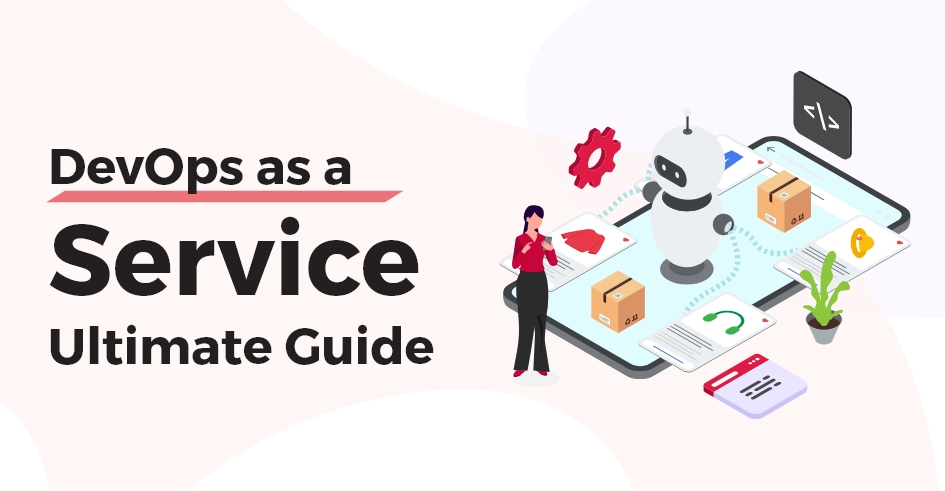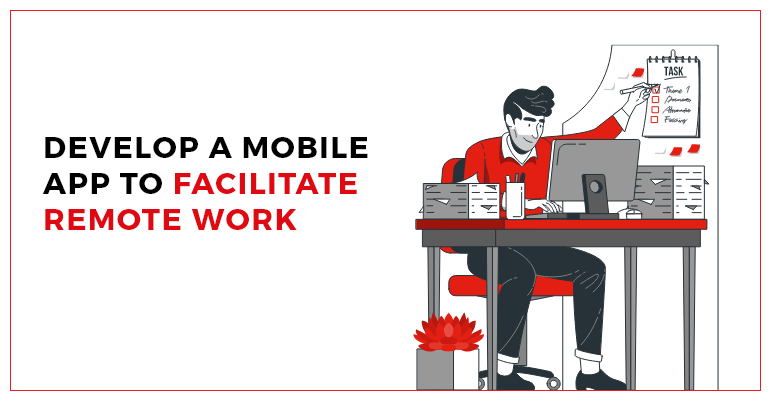Imagine this: You’ve developed a fantastic clone app, and users love the features and interface. But every time you want to monetize it, you have to set up ads or create in-app purchase systems from scratch. It’s exhausting and takes away time you could be spending on improving the user experience. That’s where DevOps as a Service comes in—like the automation tool that handles all the behind-the-scenes work of app monetization. It allows you to focus on enhancing your app while the tech infrastructure keeps running smoothly in the background.
In 2024, DevOps is no longer a trend. It’s a full-fledged revolution. The DevOps market is forecast to grow at a CAGR of 19.7%, from $10.4 billion in 2023 to $25.5 billion by 2028. That’s a big deal! More and more businesses are realizing that speed, efficiency, and innovation are key ingredients in today’s competitive landscape.
But here’s the problem: many companies struggle with long development cycles, siloed teams, and inconsistent release management. Cue DevOps as a Service. It’s like having a superhero team (minus the spandex) swoop in to save the day, automating workflows and improving collaboration.
What is DevOps?
DevOps is the combination of development and operations. It ensures your developers and IT operators are on the same page, working together to speed up software delivery without compromising on quality.
What is DevOps as a Service?
Instead of building everything from scratch, you get the tools you need on-demand, in one subscription. DevOps as a Service helps companies adopt the best practices without managing it all internally. It’s outsourcing without the hassle of losing control.
For example, you get CI/CD pipelines, automated testing, and infrastructure management — all handled by DevOps experts. Imagine having to manually deploy code every time your team adds a new feature. With DaaS, you can automate that process, allowing for 200 times faster lead times for changes. It’s like going from snail mail to email overnight.
Benefits of DevOps as a Service
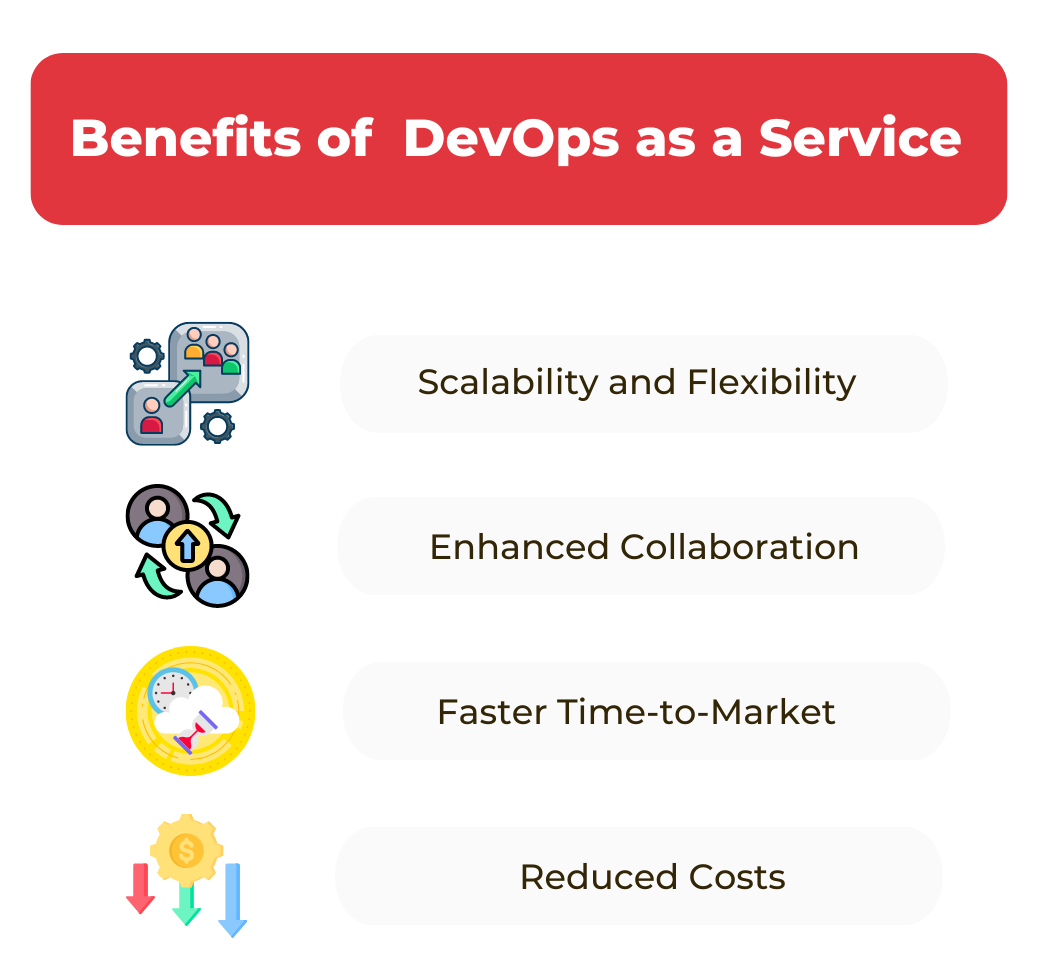
DevOps as a Service is like upgrading from a regular car to a Tesla. Both will get you to your destination, but one does it faster, more efficiently, and with fewer headaches. It’s a game-changer for businesses, allowing them to streamline their processes, reduce downtime, and foster collaboration. Let’s dive into the core benefits and why DevOps as a service is becoming the go-to solution for tech teams worldwide.
1. Scalability and Flexibility
In simpler words, DevOps as a Service offers your business—scalability. When your company grows, your DevOps infrastructure grows with you. Whether you need more storage, faster processing, or extra tools, DaaS adjusts to your needs like those trusty Thanksgiving pants.
Your infrastructure no longer limits you. DevOps as a service’s cloud-based nature means you can scale up or down instantly without worrying about overloading your systems or hitting a performance bottleneck.
For instance, you’re a retail app company with seasonal spikes in traffic. During Black Friday, your website traffic skyrockets. Instead of scrambling to add more servers, DaaS automatically scales your infrastructure. DevOps as a service ensures your site handles the load seamlessly, without the dreaded “500 Internal Server Error” crashing your growth.
2. Enhanced Collaboration
One of the biggest problems in software development has always been the dreaded silo effect. Developers and IT operations often work in isolation, like two ships passing in the night, leaving behind inefficiencies and misunderstandings. But with DevOps as a Service, collaboration becomes smoother than a TikTok dance challenge.
DevOps as a service fosters an environment where developers and IT professionals work together, sharing responsibility for the entire software development lifecycle. Imagine you’re building a new feature for your company’s custom software. Before DevOps as a service, developers created the feature, tossed it over the fence to IT, and crossed their fingers, hoping it wouldn’t break during deployment. It was like playing a game of telephone—things got lost in translation, and by the time it reached production, it barely resembled what was intended.
With DaaS, both teams have been in sync since day one. They use the same tools, share the same goals, and communicate constantly. It’s like watching your favorite band on stage, each member playing their part in perfect harmony.
3. Faster Time-to-Market
If you’re not quick, someone else will beat you to market. It’s like waiting in line for the latest iPhone—if you’re late, they’re sold out, and you’re stuck with last year’s model.
DevOps as a service speeds up the entire software development process, turning your slow, manual workflows into automated, lightning-fast pipelines. With continuous integration and continuous delivery (CI/CD), new features and updates are tested, verified, and deployed in a fraction of the time.
Think of it this way: Without DevOps as a service, deploying a new feature might take weeks or even months. Developers work in isolation, manually testing their code and then wait for IT to deploy it.
With DaaS, however, every change is automatically tested and deployed within hours. You’re no longer riding an app like Uber; you’re zooming down the tracks like the Roadrunner, leaving your competitors in the dust.
One great example is Amazon, which deploys changes to its site every 11.7 seconds using DevOps principles. Can you imagine manually deploying updates at that speed? You’d need superpowers, or TechnBrains can combine powers with you. Have a free consultation.
4. Reduced Costs
Let’s face it: running a business is expensive, and every penny saved matters. Fortunately, DevOps as a Service can help you cut costs without sacrificing quality.
Traditionally, maintaining an in-house DevOps team required hefty investments in infrastructure, personnel, and ongoing maintenance. But with DevOps as a service, you’re only paying for what you use, making it a cost-effective solution, especially for startups and small businesses.
Imagine you’re building money apps like Dave. Without DevOps as a service, you’d need to hire a full-time DevOps team, buy expensive hardware, and set up complex infrastructure—all before you’ve even launched your app. It’s like renting out an entire movie theater just to watch one film. But with DaaS, you only pay for the resources you need when you need them.
Plus, the automation provided by DevOps as a service means fewer human errors and less downtime, saving you money on troubleshooting and repairs. As the old saying goes, “Time is money,” and with DaaS, you’re saving both.
TechnBrains can do the job for you for only $99 per day! Does this sound interesting? Contact us.
Key Components of a Successful DevOps as a Service Strategy
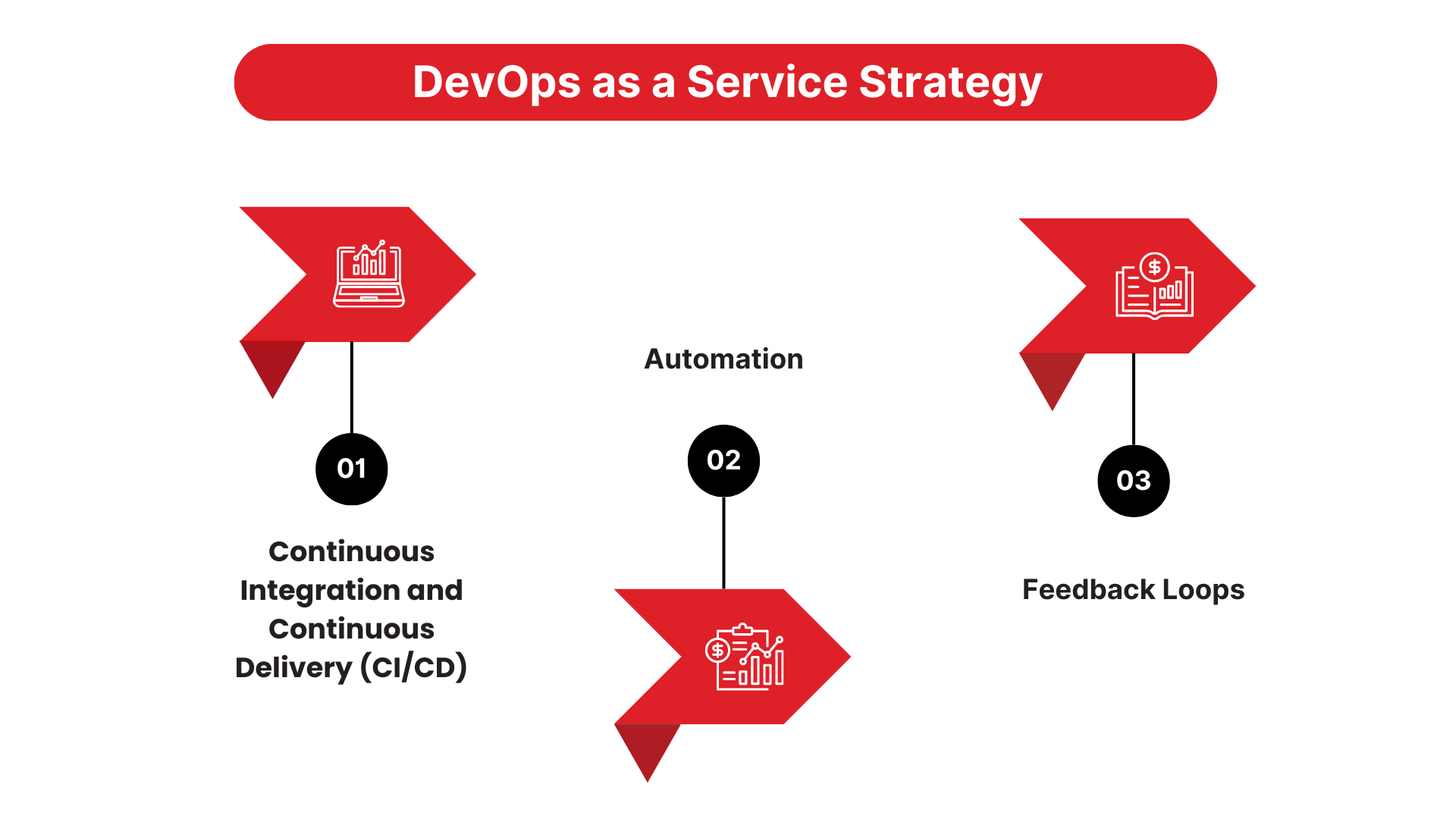
Imagine you’re building a Lego set. You can’t just throw the blocks together randomly and hope for the best, right? You need instructions and a clear strategy. The same goes for DevOps as a Service (DaaS). If you want to succeed, you need a well-thought-out plan with specific components to keep everything running smoothly. Let’s break it down.
1. Continuous Integration and Continuous Delivery (CI/CD)
The 2024 State of CI/CD Report shows the widespread adoption of CD and DevOps, the impact of integrated technologies on business results, the importance of security in CI/CD, and the effects of using multiple CD tools on deployment effectiveness.
Think of CI/CD as the conveyor belt in a chocolate factory. Every piece of chocolate passes through a series of machines, each one inspecting and perfecting it before moving to the next step. That’s exactly how CI/CD works with your software.
In the old days, developers would work on a project for months and then release it all at once. The problem? If something went wrong, it was a dead end.
With CI/CD, code changes are continuously integrated, tested, and deployed in small batches. If something’s wrong, it’s caught early and fixed quickly. Companies like Netflix use CI/CD pipelines to deploy thousands of code changes daily, ensuring they don’t accidentally break your favorite show’s streaming.
2. Automation
Remember that episode of The Simpsons where Homer buys the “Everything’s Okay Alarm”? It would only go off if something was wrong. The alarm’s job was to handle everything automatically so Homer could relax. That’s how automation works in DevOps as a service.
By automating repetitive tasks—like testing, deployment, and scaling—you can avoid human errors and speed up processes. It’s like having a self-driving car that takes care of the boring parts of your road trip, allowing you to focus on the fun stuff.
Take Amazon, for example. They’ve mastered the art of automation. With thousands of deployments daily, they couldn’t survive without it. Automating processes allows them to provide the speed and reliability that their customers expect.
3. Feedback Loops
Feedback is crucial in DevOps. It’s like trying out a new recipe: if no one tells you the cookies are too salty, you’ll keep making them the wrong way. In DevOps, feedback loops allow teams to quickly learn what’s working and what’s not.
With DevOps as a service, you get continuous feedback on your software’s performance, helping you tweak and improve it in real time. Instead of waiting for end-users to find bugs, you catch them early in the development process. This approach keeps everyone happy—your users get smoother experiences, and your team gets fewer late-night panic fixes.
Google does this exceptionally well. Their development teams rely heavily on user feedback to continuously improve services like Google Search. Their ability to quickly gather and act on feedback is one of the reasons they remain a dominant force in the tech industry.
The DevOps Lifecycle Explained
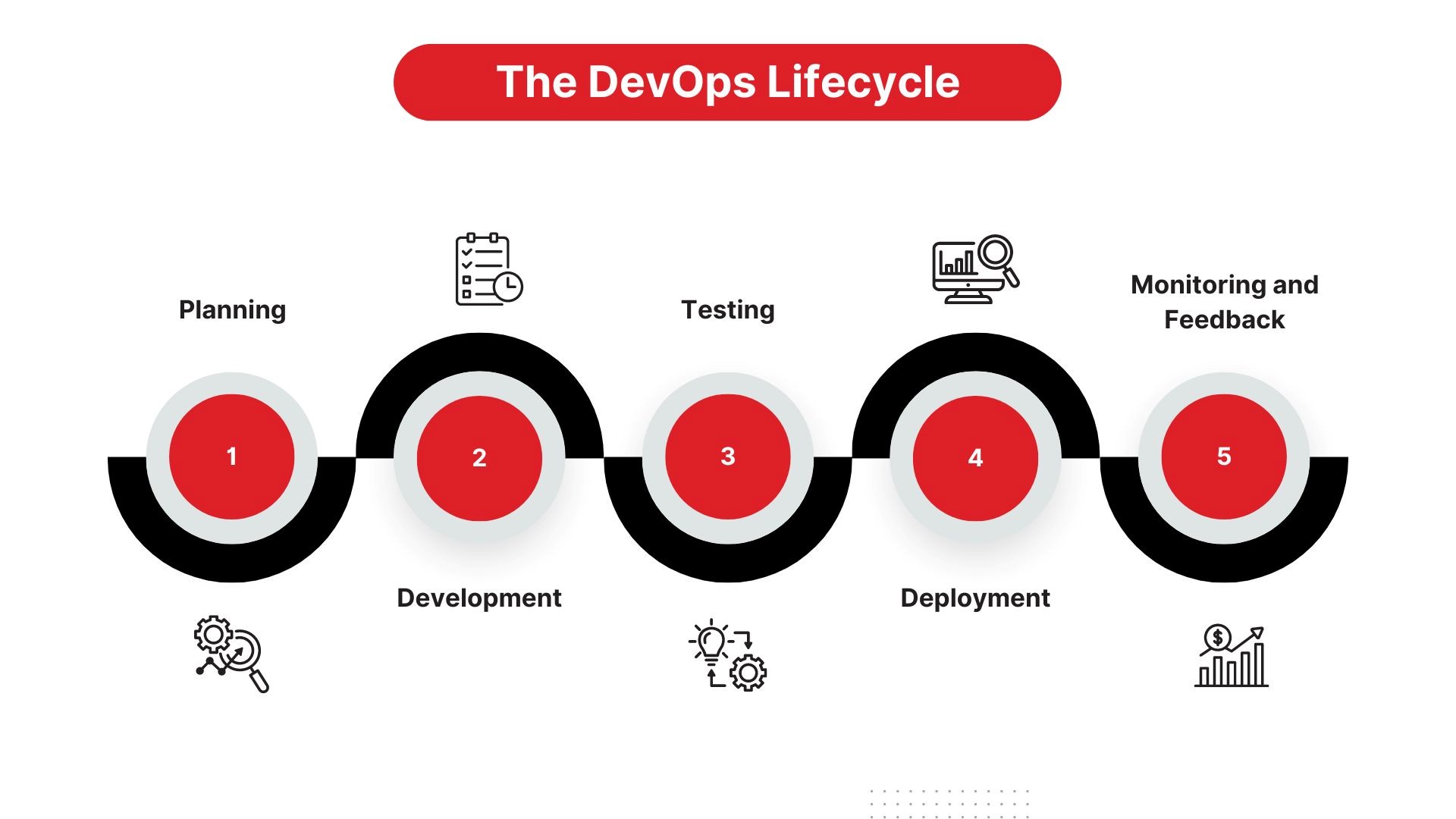
The DevOps lifecycle is like the Marvel Cinematic Universe (MCU)—a never-ending series of connected events. Just like how the MCU has multiple phases (from Iron Man to Endgame), the DevOps lifecycle also has distinct phases. Each one builds on the last, and together, they create a powerful engine for software development and delivery.
Let’s break down each phase of the DevOps lifecycle so you can see how it all works.
1. Planning
Before the Avengers can save the world, they need a plan. Likewise, before your team can release the next killer app, you need a clear roadmap. The planning phase is where teams define their goals, assign tasks, and lay out timelines. Think of it as writing the script for a movie.
During this phase, everyone gets on the same page—developers, IT, operations, and stakeholders. Collaboration tools like Jira or Trello help manage these tasks efficiently. Without this step, you risk heading into chaos (and no one wants to pull a Justice League—rushing the process only leads to a mess).
2. Development
Once the plan is in place, the development phase kicks off. This is where the magic happens. Code is written, tested, and reviewed. Developers work on small chunks of code called “features” or “user stories,” which are like the individual scenes in a movie.
Here’s where CI/CD comes into play again. Instead of releasing code all at once, teams release small updates frequently. This method reduces the risk of something going terribly wrong. It’s like filming multiple takes of a scene—you can easily go back and fix something if it doesn’t work.
3. Testing
The testing phase ensures your software is free from bugs and glitches before it reaches the audience (your users). In this stage, both automated and manual tests are performed.
Think of this as the Marvel team screening Avengers: Endgame for plot holes and awkward cuts before its release. Automated tests, such as unit tests and integration tests, run continuously to catch issues early. Manual tests, such as user acceptance testing (UAT), involve real users to ensure the software works as expected in real-world scenarios.
4. Deployment
It’s finally showtime! The deployment phase is when your software goes live. All that hard work behind the scenes pays off as the app is delivered to users. But here’s the catch—deployment isn’t a one-time event in DevOps.
In traditional software development, teams might release new features once or twice a year (yawn). In contrast, DevOps teams aim for frequent, incremental updates. It’s like how Spotify rolls out updates in the background without interrupting your playlist. No downtime. No hassle.
With DevOps as a Service, the deployment process is automated. This means updates and new features are rolled out quickly and efficiently without manual intervention. Think of it like a live concert—each song flows seamlessly into the next, and the audience (your users) never has to wait.
5. Monitoring and Feedback
The story doesn’t end once the app is deployed. Just like how movie studios keep an eye on box office performance, DevOps teams monitor the app’s performance in real-time. They track metrics like response time, user engagement, and system uptime.
If something goes wrong—like a spike in errors or a slowdown in performance—the team gets notified immediately. It’s like the “post-credits scene” in a superhero movie that teases what’s coming next. The feedback gathered here feeds into the next development cycle, ensuring continuous improvement.
DevOps as a Managed Service: Pros and Cons
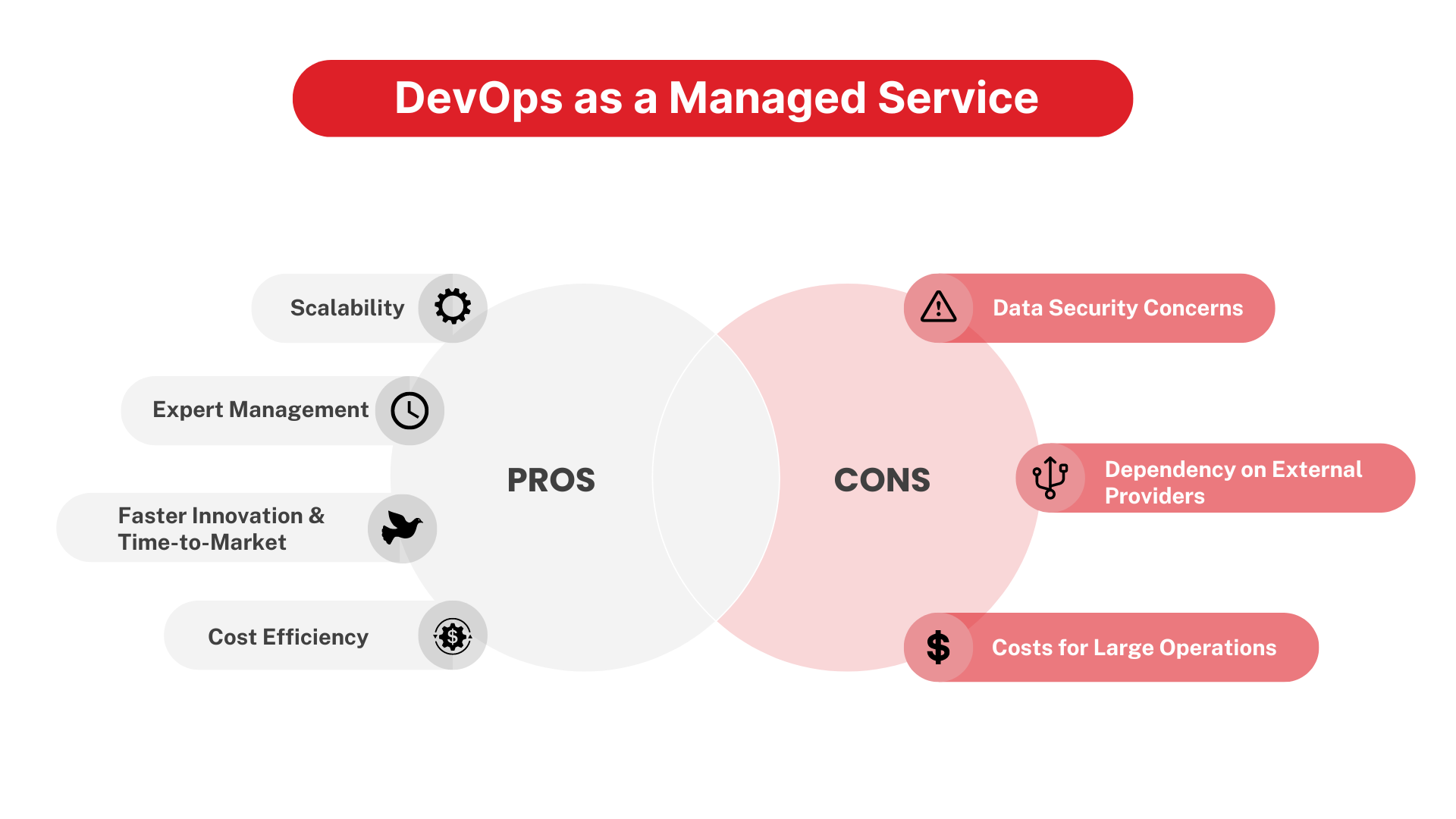
Let’s picture a typical scenario: you’re running a business, and your tech team is overwhelmed. They’re constantly juggling development, operations, testing, and deployment, all while trying to innovate. This is where DevOps as a Managed Service (DaaMS) steps in. You can outsource the tricky parts—like automating deployments and managing servers—to professionals.
Sounds ideal, right? Well, like every great deal, it has its ups and downs.
Pros of DevOps as a Managed Service
Scalability
With DevOps as a managed service, your infrastructure scales easily. As your business grows, you don’t need to worry about hiring more staff or upgrading your systems. DevOps as a service providers handles it for you. Whether you’re launching a new app or expanding your user base, scaling becomes a breeze. It’s like always having extra pizza dough ready when the crowd gets bigger.
Expert Management
Remember the feeling when your car broke down, and you had no clue what to do? Then, a mechanic swoops in and fixes it like it’s the easiest thing ever. That’s what happens when you hire a DevOps as a service providers.
You’re outsourcing your DevOps needs to professionals who live and breathe automation, deployment, and testing. These experts can fix problems faster than your in-house team might. They have years of experience and handle multiple clients, meaning they’ve likely seen it all. It’s like having a Formula 1 pit crew in your corner.
Faster Innovation and Time-to-Market
Imagine you’re a software company competing in today’s fast-paced tech world. It’s like being on a racetrack where every second counts. With a DevOps-managed service, you don’t have to worry about speed bumps.
They automate much of the deployment process, enabling faster updates and feature releases. devops as a service companies experience up to 50% more rapid development cycles, meaning your product hits the market before your competitors can even blink. It’s like when Tony Stark upgrades his suit overnight and is ready to take on the next challenge.
Cost Efficiency
Think about all the resources you’d need if you were managing your DevOps internally—people, servers, training, software licenses. That’s a lot of expenses adding up. With a managed service, you pay for what you use. This means your business can save significantly on hardware, infrastructure, and staffing costs.
Cons of DevOps as a Managed Service
Data Security Concerns
Let’s get real. When you hand over control of critical business operations to a third party, there’s always that nagging worry: “What if something goes wrong?” It’s like giving someone the keys to your house. You trust them, but you’ll always double-check to make sure everything’s locked.
In the case of DevOps as a service providers, security risks can arise, especially if you’re dealing with sensitive data (think financial information or healthcare records). It’s important to choose a service provider with top-notch security protocols. They should follow industry standards like ISO 27001 and GDPR to safeguard your information. Otherwise, a data breach could be as disastrous as your house getting robbed while you’re away.
Dependency on External Providers
When you outsource DevOps, your business is at the mercy of the provider’s performance. If they face internal issues or delays, it can cause bottlenecks in your development process. So, while the service can scale your operations, there’s always a risk that if something goes wrong on their end, your product could be affected.
Costs for Large Operations
While DevOps as a service providers can save you money, it’s not always the cheapest option for every business. If you’re a large company with heavy traffic and frequent deployments, the monthly fees for DevOps as a service providers can quickly add up. It’s like choosing between renting a car or buying one outright. For some, it’s more cost-efficient to build and manage DevOps internally.
Businesses with highly specific requirements or large operations might find that the expense outweighs the benefits. You might be paying for tools and services you don’t necessarily need, like buying the deluxe version of a product when you only need the basics.
Top DevOps Platforms as a Service
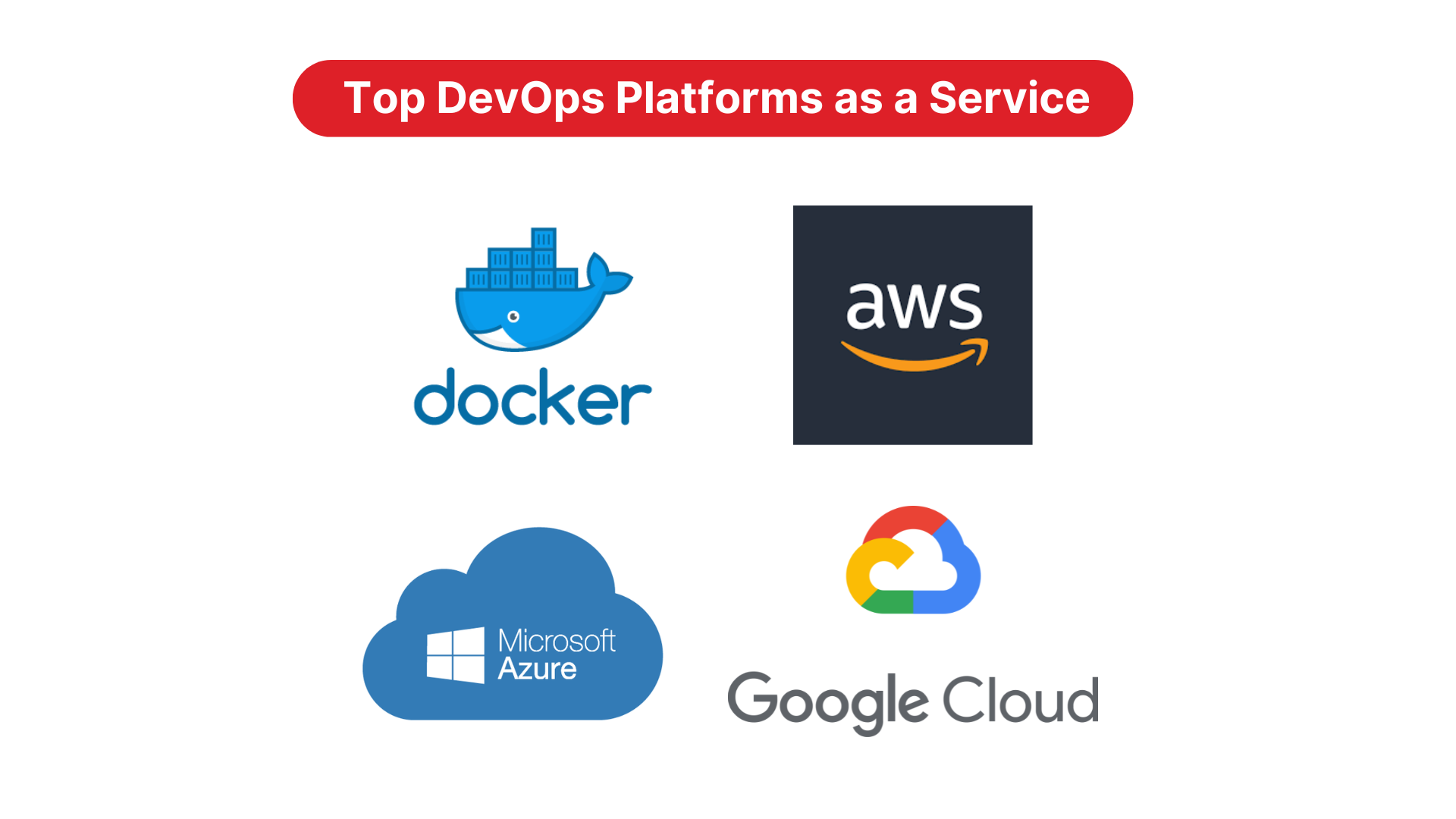
With the increasing demand for faster product delivery, businesses are relying more on the DevOps platform as a service to automate their processes.
But let’s talk about the real superheroes of this market—the top DevOps Platforms that are shaping the future of DevOps as a Service.
If there’s a Captain America in the DevOps world, it’s definitely Docker. Docker is a DevOps platform as a service tool that uses containerization to simplify software development. It packages applications into containers, making it easier to deploy them across various environments.
The best part? Docker is fast. It’s like having a super-speedster in your development team, enabling quick deployments without worrying about environment configurations. As of 2024, Docker holds a commanding 82.86% market share in the containerization world, and it’s only getting bigger.
The simplicity of Docker has made it a go-to tool for developers, allowing them to “build once, run anywhere.”
Now, let’s talk about the Hulk of cloud services: Amazon AWS. AWS isn’t just a cloud provider—it’s the undisputed king of the cloud. This DevOps platform as a service offers over 200 DevOps tools designed to automate processes, monitor performance, and manage infrastructure. AWS is like the one-stop shop for all things DevOps.
One reason AWS dominates the DevOps scene is its extensive suite of services, including EC2, Elastic Beanstalk, and AWS CodeDeploy. AWS’s ability to manage complex workflows and handle massive amounts of data makes it the go-to platform for businesses of all sizes.
Azure is all about precision, integration, and scalability. It has an array of DevOps services like Azure Pipelines and Azure Kubernetes Service that make it easy to automate and manage deployments. Azure offers an impressive 1,587 DevOps tools in its marketplace.
One of the key advantages of Azure is its tight integration with Microsoft products. For businesses already using Windows and Office 365, adding Azure’s DevOps solutions is a no-brainer. Azure’s DevOps market share might be smaller than AWS, but with a 13.72% slice of the pie, it’s still a force to be reckoned with—just like Stark with his advanced tech and cool gadgets.
Last but not least, we have Google Cloud. Think of Google Cloud as the Spider-Man of DevOps—young, agile, and full of potential. While it doesn’t have the market dominance of AWS or Azure, Google Cloud has made significant strides in the DevOps space.
With Google Cloud’s DevOps platform as a service, companies benefit from tools like Google Kubernetes Engine and Cloud Build. Google Cloud focuses on open source, making it a great choice for businesses looking to avoid vendor lock-in. Though its market share stands at 4.05%, Google Cloud continues to grow, proving that even the friendly neighborhood hero can make a big impact.
By analyzing the DevOps platform as a service and their strengths, businesses can make informed decisions about which platform best suits their needs. Whether you go with Docker for containers, AWS for massive scalability, Azure for seamless integration, or Google Cloud for flexibility, the DevOps world offers plenty of options.
How to Choose the Best DevOps as a Service Provider
Choosing a DevOps as a Service provider can feel a bit like trying to pick the perfect superhero team. You want the right combination of expertise, reliability, and the ability to save the day when things go wrong. But how do you decide who should join your team? Let’s break it down step by step.
1. Expertise Matters
You wouldn’t hire an inexperienced chef to prepare a five-course meal for your wedding, would you? The same logic applies to choosing a DevOps as a Service provider. You need a team that has proven experience in delivering successful implementations. Look for case studies and client testimonials.
For instance, if you’re a FinTech app development company, you’ll want a DevOps provider who knows how to handle financial regulations, security protocols, and compliance.
Pro Tip: We ask our clients to explore our portfolio and inquire about similar projects in their industry. For instance, as an experienced healthcare systems provider, we know HIPAA regulations like the back of our hand.
2. Scalability is Key
As your business grows, so will your tech demands. You need a DevOps provider who can scale their services along with your company. This is like hiring an architect who can design your dream house with the possibility of future expansion. Imagine building a house and then realizing you need more rooms down the line but can’t add any.
Let’s say you’re a small startup now. Great. But what happens when you expand into international markets? Will your DevOps provider be able to handle that?
3. Security Should Be a Priority
We live in a world where cyber-attacks are as frequent as new TikTok trends. So, security can’t be an afterthought. Your DevOps provider should follow the strictest security protocols.
Ask the provider about their security practices. Do they conduct regular vulnerability assessments? Do they offer encrypted communications? Imagine handing over your credit card details to a stranger in the street. Without secure systems in place, that’s what you’re effectively doing with your data.
We always use the Best Mobile App Security Practices and Tools to Protect Your App, so you do not have to worry.
Best Practices for DevOps as a Service
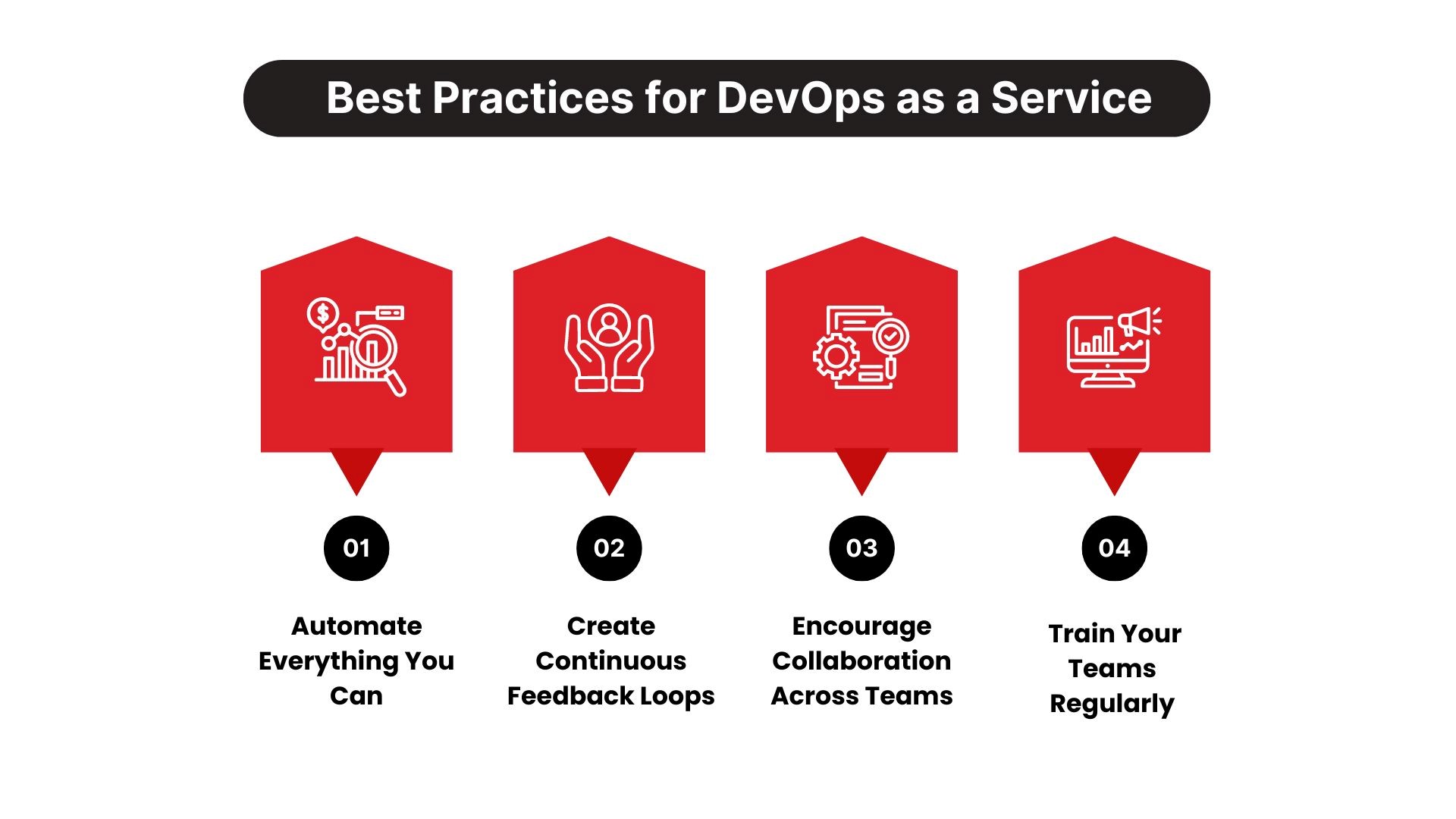
You’ve chosen your DevOps provider, and now comes the hard part—implementation. But fear not. Implementing DevOps as a Service is like assembling a well-oiled machine, but only if you follow best practices. Let’s walk through them together.
1. Automate Everything You Can
DevOps as a Service allows you to automate repetitive tasks so your team can focus on what really matters—innovation. Think of it like using a washing machine instead of scrubbing clothes by hand. Sure, both will get the job done, but one is much more efficient.
For example, automating deployment pipelines means your team doesn’t need to manually push out updates. Not only does this reduce errors, but it also allows you to ship features much faster. It’s the difference between taking a horse and buggy to work versus driving a Tesla.
Pro Tip: Start with automating your CI/CD (Continuous Integration/Continuous Deployment) processes. This will help ensure that every change in your code is automatically tested and deployed in real-time.
2. Create Continuous Feedback Loops
DevOps is all about learning, iterating, and improving. To keep improving, you need feedback. Lots of it. Establishing continuous feedback loops between your development, operations, and business teams ensures that everyone is on the same page and problems are caught early.
Think of it as the “Live, Laugh, Love” mantra, but for tech teams: Test, Fix, Improve.
Example: Say your e-commerce platform launches a new feature. Through continuous monitoring, you notice that users are abandoning their shopping carts at a higher rate than usual. Immediate feedback allows your team to investigate and fix the issue before it costs you thousands in lost sales.
3. Encourage Collaboration Across Teams
Developers, operations, and security teams often have conflicting priorities. DevOps as a Service breaks down those silos. It’s like assembling a dream sports team where every player knows their role but is working toward the same goal—winning the championship.
Use tools like Slack or Microsoft Teams to foster collaboration. Teams should communicate openly about challenges, successes, and improvements. Remember, a lack of communication is like watching a horror movie where everyone splits up when the villain shows up—disastrous.
4. Train Your Teams Regularly
DevOps tools and methodologies evolve faster than Marvel movies. Continuous training is important to stay ahead of the curve. Make sure your teams are familiar with the latest tools, practices, and security measures. If you’re still using outdated tools, your competition will outpace you.
Pro Tip: Set up quarterly training sessions or certifications for your team. Encourage learning about new tools and methods like Kubernetes, Terraform, or Ansible. The more your team knows, the more efficient they’ll become.
Choose TechnBrains for Your DevOps as a Service
At TechnBrains, we understand that adopting DevOps isn’t just about implementing tools—it’s about transforming your entire development process. As a leading DevOps as a Service provider, we tailor our services to fit your business goals, ensuring seamless integration, faster deployment, and increased efficiency.
Our team of experienced professionals works closely with you, offering custom solutions that leverage the latest technologies and best practices. Whether you’re a startup looking to scale or an enterprise aiming for agility, we can help you achieve your objectives with precision and speed.
TechnBrains delivers end-to-end DevOps solutions designed to streamline your operations and empower your teams. Our robust infrastructure, hands-on support, and deep industry expertise make us a trusted partner in driving business growth through innovation.
Ready to take your software development to the next level? Together, we’ll build a more efficient, agile, and scalable future for your business.


